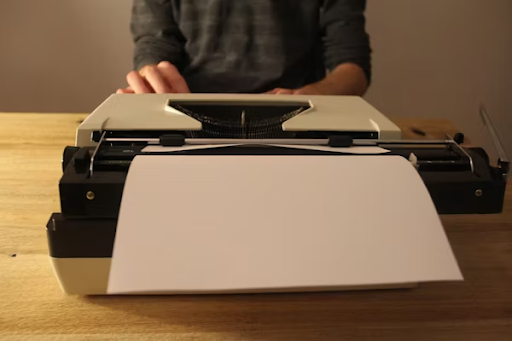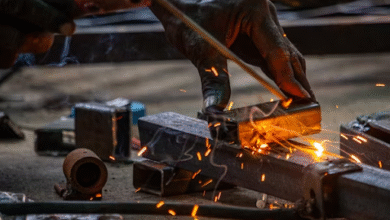Comparison Between Drum Printers and Laser Printers

These days choosing the right office printer is a decision that can affect your day-to-day operations as well as the expense and quality of printed documents. For B2B businesses that require a lot of internal printing, understanding the distinctions of drum and laser printers is crucial. This guide will help to demystify the differences between the two printers, how they operate, the costs involved, and the maintenance required to better assist the decision makers.
Description of Drum Printers
Having an office printer which is able to manage a lot of printing is a drum printer. It is a form of impact printer which uses a rotatable drum to move an inked ribbon and embossed characters to paper. It uses a spinning motion to strike the paper drum and drum ribbon which results in a printed paper. Even though the technology is dated, drum printers are used for B2B companies because they are trustworthy and can perform uninterruptedly for extended periods of time.
The first thing that comes up when talking about the benefits of drum printers is their ability to maintain consistent performance even when used for high volume printing. They’re commonly used for printing forms, invoices, or multi-part documents that require impact printing. Furthermore, when bulk printing is done, the overall operational cost of drum printers is much cheaper and so, they are used plenty by companies whose priority is saving cost rather than printing high-resolution graphics.
Investigating Laser Printers
Laser printers, by the other hand, are still printers that do not perform any impacts and instead, printer beams create an image on a rotating drum that is sensitive to certain amounts of light. Particles of toner are then added to the charged areas, and with a combination of the heat and the paper pressure is added, the toner is fused to the paper. This System has been adopted in companies all around the world for the speed and efficiency along with precision and high-quality documents produced, both text and graphics.
There are a plethora of advantages that laser printers provide to B2B offices. In addition to high speed performance on bulk printing with sharp text and precise, consistent graphics, laser printers are believed to be one of the most efficient printer systems. Unlike drum printers, laser printers require much less maintenance – which also saves plenty of time in the productivity of the overall office.
Cost Considerations and Toner Supplies
Pricing remains a pivotal focus while analyzing drum and laser printers because of the volume of printing that a particular business unit may undertake. Considering the case of drum printers, these printers maintain relatively higher upfront prices, however, these printers have a relatively lower operational cost in some conditions and mainly because these printers operate with ink ribbons which are cheaper.
In the case of laser printers, these printers are selling at a relatively higher price than the rest, however, these printers have a relatively higher value in the long run when the office is printing a lot of text and high in quality graphics. No matter the situation, for these laser printers, the value of the toner is a critical focus as the quality and reliability gets decreased. It is thus prudent for compromising a printer to maintain reliable cooperation.
Drum and laser printers are known for a single recurring investment, the toner and cartridges. Having a smart strategy for the inventory of toner cartridges will help maintain a higher productivity levels in the case of breaking printers.
Maintenance and Reliability
Drum and laser printers demonstrate marked differences in how and when maintenance servicing needs to be performed. Drum printers are mechanically more complicated and require periodic cleaning and periodic replacement of some drum components. Their sturdy build makes them multitask printers, especially in high continuity environments, as they have very few operational issues throughout long print runs.
Spare parts for laser printers are the toner cartridges and the printer drum. Interventions for laser printers are much more infrequent as compared to drum printers, and the overall quality of toner suppressed more of the reliability issues of drum printers. Unfortunately, used poor quality toner may lead to printer streaking, and smudging, and can lead to utter obliteration of the printers interiors. Thus, B2B businesses are encouraged to purchase toner cartridges and proactively replace them to boost the overall output, lifespan, and reliability of the printer.
Choosing the Right Printer for Your Office
Whether to choose a drum printer or a laser printer largely hinges on the unique needs of your business. If an office needs to print a very high volume of documents that are mostly text and collect on any graphic, a drum printer may be the most cost effective and reliable choice. On the other hand, a business that needs to print text and images fast, along with requiring low maintenance and superior quality, will opt for a laser printer.
Every factor should also include the availability and price of toner supplies. Reliable toner supplies give you the best chance of avoiding interruptions in printing operations, as well as avoiding interruptions to the quality of the printed documents. One factor to note is that drum printers and laser printers operate through similar mechanisms. They also require certain consumable items which for drum printers and laser printers are ink ribbons and toner cartridges respectively. Choosing the right supplier for these consumables is very important, especially in regard to optimal office printing operations.
As an illustration, a drum printer can be integrated with a laser printer in a hybrid setup which is especially beneficial to businesses that need both high-volume document printing and high-resolution graphic output. Companies are able to operate in a hybrid environment which allows operational efficiency to be enhanced while still managing toner supply costs.
Conclusion
For B2B decision makers wanting to streamline office printing operations, it is vital to know the differences between drum printers and laser printers. They both can function without being hacked. Drum printers are less expensive and can print a larger number of documents which makes them ideal for bulk printing. Laser printers have the ability to print documents at high speed with great quality and can print a larger number of different types of documents. Both these printers require toner, as well as a precise maintenance routine, in order to achieve maximum productivity without interruptions.
Evaluating the unique printing requirements of your business alongside the operational cost and the type of quality consumables, you are able to determine which printer best suits your office. Balancing the available options, whether a drum printer or a laser printer, will improve printing productivity while augmenting the overall performance of the business.



